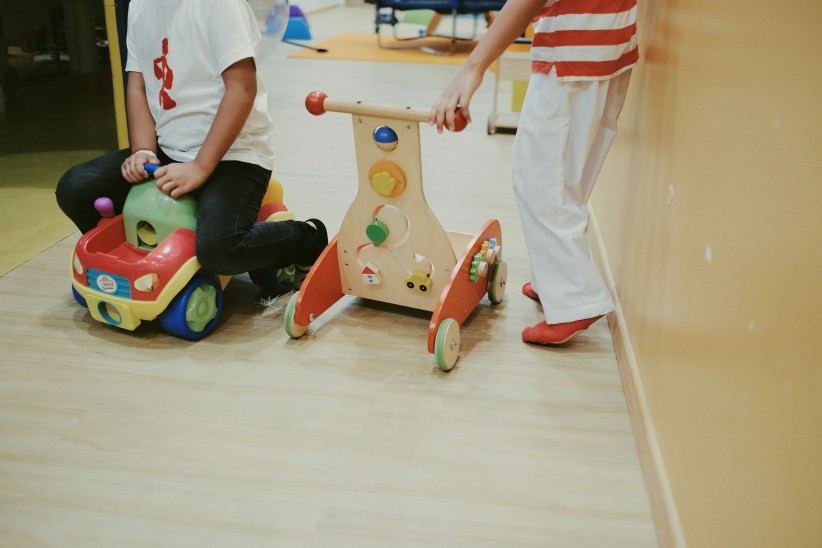 Approximately 10 percent of women will have their water break before the onset of labor. That means the other 90 percent will face the choice of an amniotomy (artificial breaking of the amniotic sac) or having their membranes rupture on their own (spontaneous rupture of the membrane, or SPOM).
Approximately 10 percent of women will have their water break before the onset of labor. That means the other 90 percent will face the choice of an amniotomy (artificial breaking of the amniotic sac) or having their membranes rupture on their own (spontaneous rupture of the membrane, or SPOM).
Why do I bring this subject up? One of my doula friends, Nikita, recently attended a birth where there was great debate regarding if and when the mother should have her membranes ruptured by her doctor. After much time and discussion, the client opted for this procedure. She was fortunate enough to have a well-educated birth doula with her to explain the pros and cons of such an intervention. For those forging forward on their own, here is a breakdown of why you may or may not want an amniotomy.
What is an amniotomy?
Also known as an AROM, this is a procedure done to artificially rupture the membranes or “break the water.” This should not be attempted by anyone other than your care provider. To do this, your care provider will insert an amniotic hook (it looks like a crocheting needle) into the vagina to perforate the amniotic sac.
Why is this procedure done?
There are a few reasons why a care provider may choose to rupture the mother’s membranes:
*It enables the provider to insert an Internal Fetal Monitor if he or she does not feel that the External Fetal Monitor is giving an accurate reading.
*If there is concern about fetal distress, this allows the provider to view the amniotic fluid to see if there is meconium (a thick, tar-like substance that lines the unborn baby’s intestines).
*To progress dilation: Without the pool of fluid surrounding the baby, it is believed the baby can descend deeper into the pelvis and apply more direct pressure onto the cervix, thereby increasing dilation.
*It may help move labor along by stimulating stronger uterine contractions. If this is the case, it is also important to consider the timetable the care provider is using to judge the need to “speed things along.” The World Health Organization defines first-time moms in labor for more than 18 hours as being in prolonged labor. If the mother has only been in labor for six or eight hours, there may not be a need to push her faster than her body is ready to move.
I have advised my doula clients to use an AROM in two different scenarios. One scenario is when the care provider gives the laboring mother two options: starting Pitocin or breaking the water. Depending on where the mom is in labor, breaking the water can be a good way to avoid the use of Pitocin and help move the mother into a more consistent labor pattern. (While the use of Pitocin and an amniotomy are both interventions, Pitocin tends to require the need for more immediate interventions.)
The second scenario is when the mother is in transition (8-10cm), and is in pain and needing a final push to reach the end of labor. Rupturing the membranes at this point can speed things along rapidly by removing the fluid-filled bulging bag and adding extra pressure to the cervix to reach full dilation.
Are there risks to rupturing the membranes?
There are risks, including:
*Once the bag of membranes is ruptured, the mother’s body will continue to produce amniotic fluid; however the buoyancy created in utero is no longer there. In other words, the baby no longer has a cushion of fluid to help him or her shift and move easily in the pelvis to find the best fit for his or her head to apply pressure to the cervix.
*Increased chance of umbilical cord prolapse, or cord compression. Drawing on the same theory stated above–the lack of intrauterine buoyancy–the cord can get compressed between the baby and the uterine wall or placenta. The cord may also slip between the baby and the cervix as the water releases out when the bag is ruptured. Should the cord be in a precarious place, it could be compressed and momentarily cut off oxygen supply to the baby. A certain amount of this is normal, but prolonged periods can cause fetal distress. Cord prolapse occurs in 0.6% of deliveries.
*Increased chance of introducing infection with the protective barrier gone.
*Labor contractions are often perceived as much more painful once the water has broken.
*The “time clock” starts. Many care providers would like to see the baby out within a certain amount of time after the membranes have ruptured. Some care providers I have worked with are willing to stretch the rule–usually 24 hours after rupture–if the mother and baby are not showing any sign of fever or distress. I recommend checking with your provider ahead of time to find out his or her preference.
*Increased risk of Caesarean section.
What if my water doesn’t break on its own?
Most care providers are going to break the bag before delivery if it has not ruptured on its own. There is a rare occurrence called being born “in the caul,” in which the baby is born in an intact amniotic sac. Some believe this is harmless and the caul, or veil of membranes, can easily be wiped away. Others are concerned that the baby will try to take his first breath and ingest amniotic fluid that may have meconium present.
Final thoughts
Just like with any intervention, it is important to weigh the risks versus the benefits. I strongly advise expectant parents to discuss with their care provider what their protocols are for an amniotomy.























